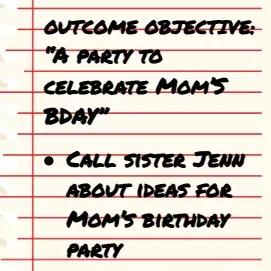Growth Through Action Over Perfection

“7 Lessons Learned” through mistakes both big and small.
Whether it’s building a services business like Axioned, or building digital experiences or tech products, taking calculated risks and making mistakes can support if not spur growth.
I and my Axioned team have experienced various mistakes along this journey that have contributed to a bank of experiences we can refer to when we encounter similar and/or hybrid “another one of those” situations in the future.
7 lessons I’ve learned through mistakes, big and small…
#1/ Use the “another one of those” principle
Reflect on and learn from all your experiences — mistakes or otherwise — so that when you encounter similar or “hybrid” scenarios in the future, you can identify it as “another one of those” (Ray Dalio) and apply learnings and the tweaks desired.

At Axioned, we’re working on what we’re calling our “Lessons Learned” system; whereby we document, communicate, discuss widely, and revisit frequently, our collective, “Lessons Learned”.
#2/ Continuously reflect-on & question actions (or inaction)
Are your/your team’s actions pushing the needle in the right direction? How do you know; via what data points? When you/your team retrospect, what’s working, why? What’s not working, why? What should you double-down on vs. stop?
#3/ Know your trade-offs and don’t over or under-estimate the associated risks (FMEA model thinking)
Give sufficient airtime to discuss the trade-offs you or your team thinks they’re making, and question the perception of risks associated with specific actions or inaction.
For evaluating risk, I like to use the FMEA model, formally and informally. Here’s an FMEA template and some quick high-level notes:
- The risk — aka RPN (risk priority number) — of anything can be calculated by multiplying: impact severity/seriousness x probability x ability to detect= RPN
- The higher the RPN score = greater risk
- Think of the impact severity/seriousness (of the risk happening) on a 1–10 scale: 10/significant impact ↔️ 1/little to no impact.
- Think of the probability (of the risk happening) on a 1–10 scale: 10/ it’s highly likely that it will happen ↔️ 1/extremely unlikely it will happen.
- Think of the detectability (of the risk’s impact, if it does happen) on a 1–10 scale:. 10/it’s very difficult to detect if this risk occurs ↔️ 1/it’s very easy to detect if this risk occurs.
#4/ Be imprecise & be an imperfectionist
Again, from Ray Dalio and his book Principles…
“Be imprecise: ‘By-and-large’ is the level at which you need to understand most things.”
“Remember the 80/20 rule and know what the key 20% is.” Don’t get bogged down in the details. Once you’ve gotten most of the learning you need, make a decision.
“Be an imperfectionist: Perfectionists spend too much time on the little differences at the margins at the expense of important things.”
#5/ If you‘re looking for action, where do you see evidence that both the project outcome/why? statement + next visible physical action is crystal clear?
- What’s the Project Outcome (or Outcome Objective) & associated “why?”
- What’s the next visible physical action aka next action?
Where are the above documented? Have they been shared or communicated? How? Can you, and everyone who needs it, access and see it? Are you all referring to and seeing the same thing? Is there clarity and consistency?
What‘s a “next visible physical action” (or next action)?
It’s a concept associated with David Allen’s GTD (Getting Things Done) model.
BEFORE: “Mom” on your to-do list is unclear. There’s zero clarity about what the next visible physical action will be, which can cause stress and anxiety, and subsequently, zero action/movement.

AFTER: “Mom” can be translated into: 1/An overall Project Outcome (or Outcome Objective) & 2/A clear and visible physical “Next Action” that triggers clarity. Clarity triggers action and positive engagement.

6/ Sleep on it; don’t act when emotions are high
Avoid reacting or making judgements when emotions are high. Sleep on it. Keep sleeping on it till you have the ability to communicate without (or with less) emotion.
Think hard about your end-goal and whose support you need to achieve it. Will doing xyz help with that or not?
The “Avoid After 9pm Rule”: Avoid making big work/life decisions (or avoid sending/starting any form of emotionally-charged communication) after 9pm. Remind yourself/tell your thoughts, “I can come back to this thought tomorrow.”
7/ Keep moving/taking action, even if your inputs and thoughts are conflicted
Listen to the different lenses and perspectives that exist, but also question (ideally privately) the motives, biases and level of experience you and others bring to the situation, without passing personal judgments or shaming anyone.
If your inputs and thoughts are conflicted, and none of the above Lessons help nor apply, try seeking further clarity through…
- Sitting comfortably with inaction (as your action). Can you?
- Try “rubber duck debugging”; talking it out with others. Rubber duck debugging = explaining a problem to someone else — possibly even to someone who knows nothing about the problem— and then hitting upon the solution in the process of explaining it.
- Try taking AN action. Make a mistake. Or not. Learn through doing. This way you’ll get an experience with results and data points to “feed into” the “another one of those” principle (see Lesson 1).
All the best things that I did at Apple came from (a) not having money and (b) not having done it before, ever. Every single thing that we came out with that was really great, I’d never once done that thing in my life. ~Steve Wozniak, Co-Founder, Apple Computer (source)

